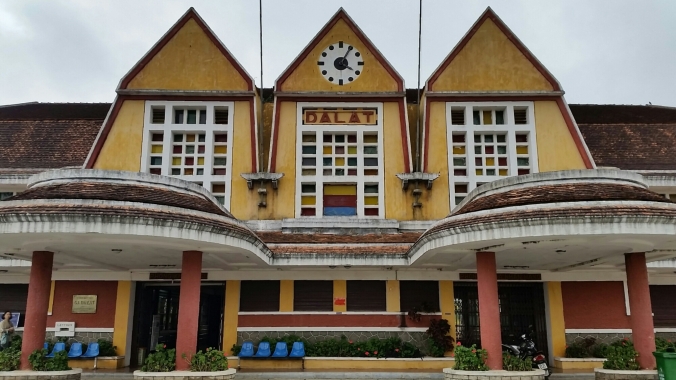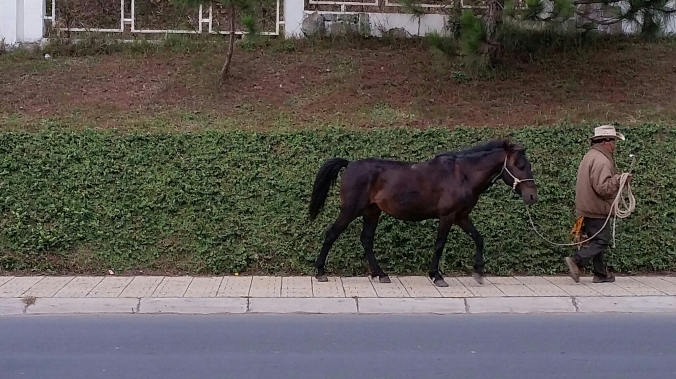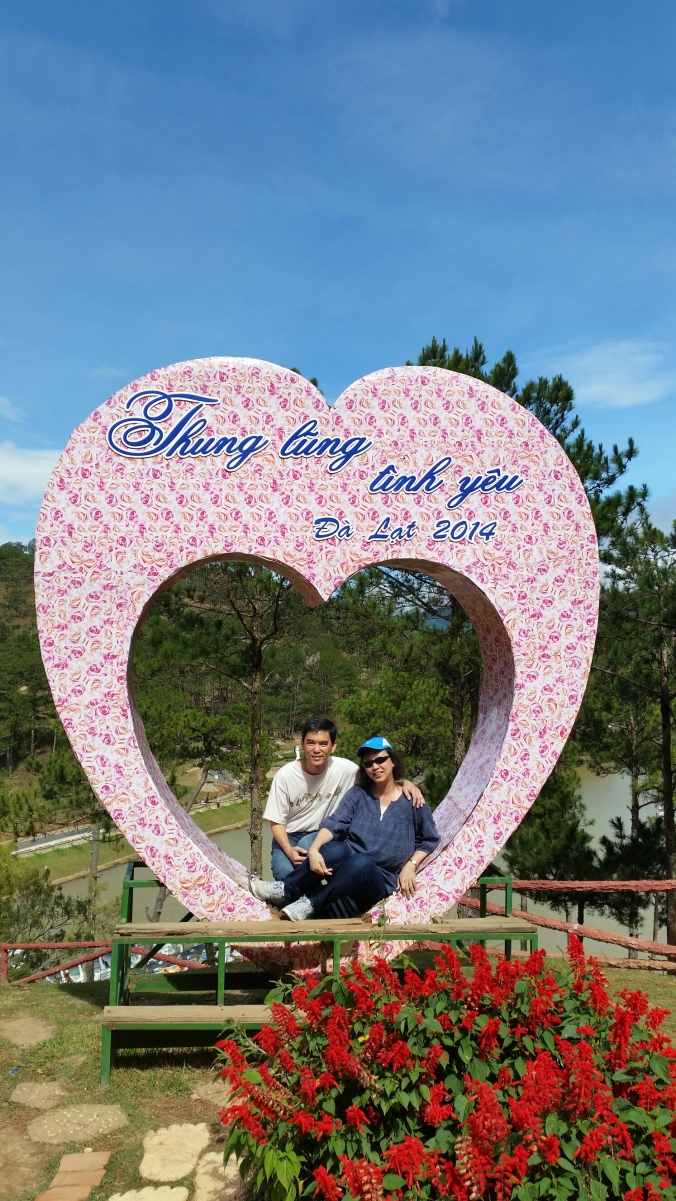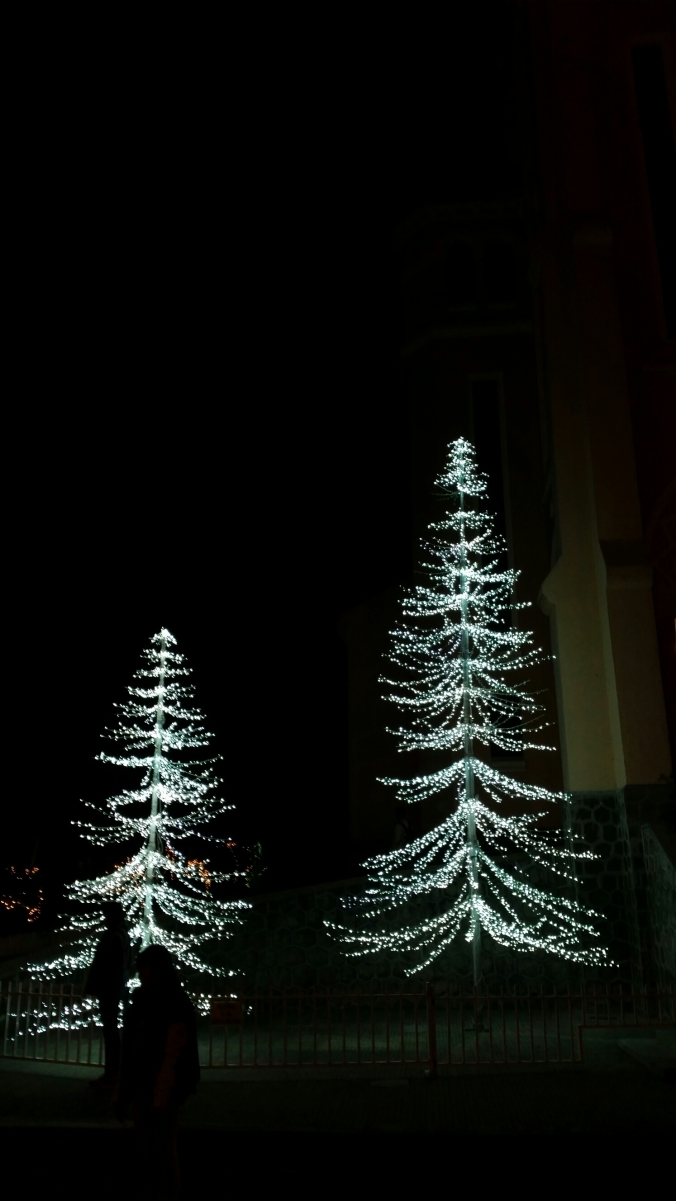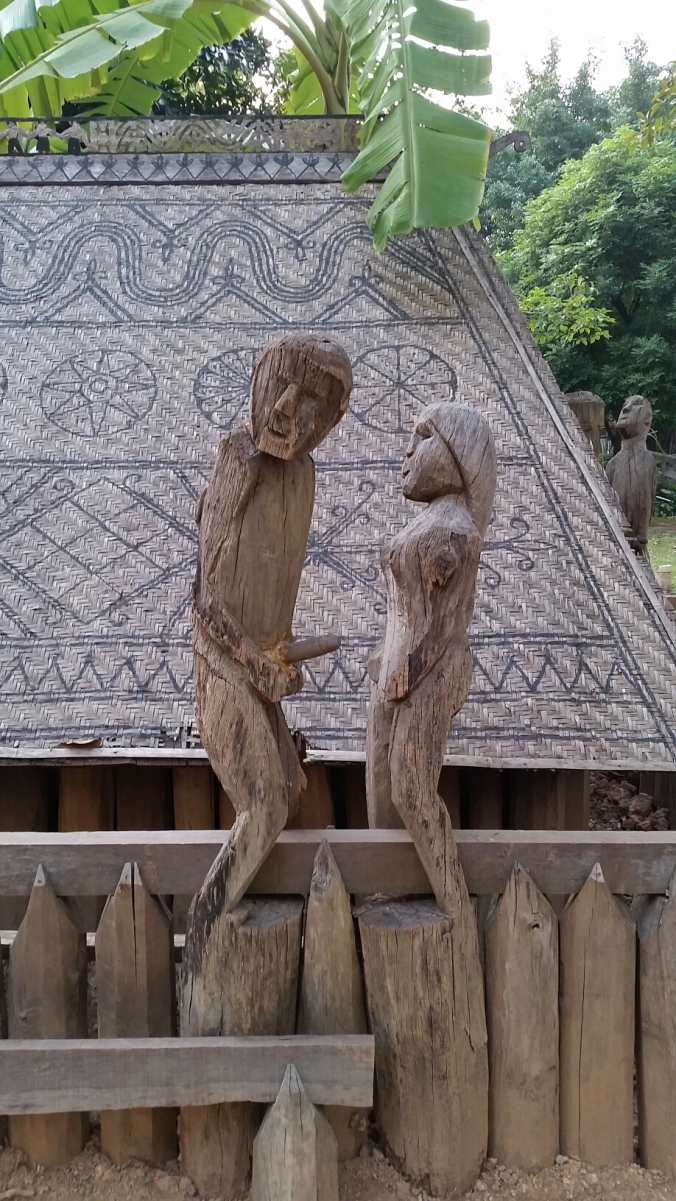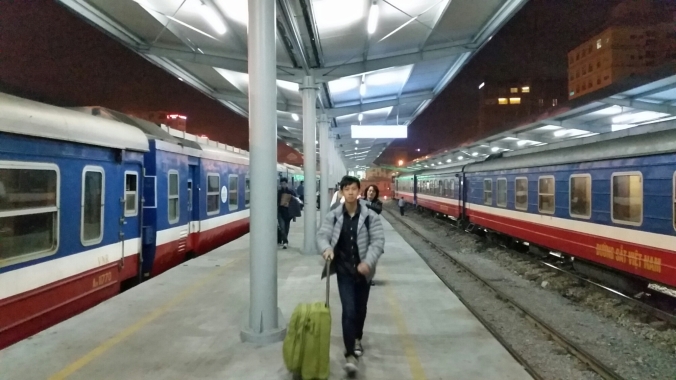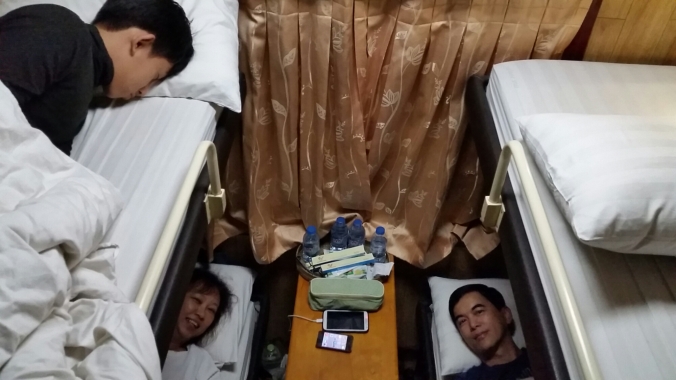We arrived early in the morning at Lao Cai train station after our overnight ride. A wall of morning fog greeted us along with the coldest temperatures I’ve felt for years. The forecasts said it would be 6 degrees upon arrival and it sure felt like it. We quickly piled on the layers and got onto the minibus that would ferry us to Sa Pa, a township at a higher altitude (and colder temperatures).
A forty minute ride and some uncomfortable sleeping positions later we arrived at our inn in Sa Pa, stiff from our night on the train. We had a long day ahead so we had some breakfast and quickly went to rest. After all, the freezing temperatures and morning fog left a lot to be desired if we were to roam the streets early on. We slept for a while eventually.
At eleven, we packed some warm clothing and water and went for our mini adventure in the mountains. We had a local guide show us the way from our Inn. Out on the streets we were surprised at how much the weather had cleared up. The morning fog was but a temporary fixture that once lifted, exposed clear blue skies that ran to the peak of every observable mountain, beyond as far as any eye could see. It felt great standing in the sun and to feel the thaw as it warmed you from the outside.
The city, too, was in full swing. There were shop houses selling colourful handmade goods, massage parlours, tour bus information counters and even a nice reflective lake that mirrored buildings that stood silently in the background.
The guide (who only rose to my shoulder) introduced herself as a member of the Hmong people, which comprises of less than 2 percent of Vietnam’s total population and are clustered mainly around the Northern parts of Vietnam. An interesting fact about the Hmong is that many of them migrated to America after the Vietnam war in 1975. There are now about 250,000 Hmong in the USA, Brenda Song (the actress who played London Tipton in The Suite Life of Zack and Cody) being among the most well known. The guides’ name was Pang, she was friendly and spoke fluent English, that of which she claimed to have learnt from fellow tourists.
We walked downhill as we cut away from the main road. Immediately we realised that we were unprepared for this hike, for it was truly (in every sense of the word) a hike. The path was wet with mud every once in a while, with little streams cutting through where we had to jump over, and sometimes we had to balance on rocks in order to get past obstacles. This may appeal to the inner adventurer in some, but it sure didn’t appeal to me. I had already experienced this before, day in day out, stuck in thick jungles covered in sweat and grime, ears ringing with mosquitoes and faced with a wall of green. This was not the kind of thing I could envision myself doing on a regular basis.
So at first, I wasn’t having the time of my life. In fact, I’d seen this all before in varying permutations, in some way or another. Well, that soon improved for two reasons. Firstly, I found the walk relatively easy though it lasted 5 hours, went up and down some severe slopes and included the blazing sun. They were things I’ve been through in more horrendous proportions, and for a few days at a time as well. The only real hassle was to avoid getting my civilian clothes dirty which with all the surrounding mud proved to be a tall order. Other than that I could deal with everything well, and it was a literal walk in the park. But that didn’t mean the walk was easy, for my parents and brother did have difficulties. There were steps that needed that extra helping hand, rocks that may give way upon being stepped on and streams in which your entire feet could submerge. We had 3 other Hmong villagers guide us along the way, holding our hands and helping us take the right steps so we wouldn’t slip and get muddy, sprain an ankle or fall off a cliff.
Secondly, I (and in fact we) was (were) amazed by the farmland culture and scenery of the area. The guides weren’t just a physical help, they talked a lot about their lifestyle. There were vast differences in average marriage age, childbearing age, sleep cycle, etc. as compared to back home where we had to focus on our studies more before building a family and establishing ourselves in this world. The life here was simple, the work here difficult but not overly complicated and human relationships built on basic pillars of trust and kinship. The doors had no locks and most things were shared. Instead of printing papers they sewed intricate fabrics out of stem fibers and natural dye. Instead of supermarkets they grew everything from rice to livestock. Instead of group assignments and project work, they worked together and helped each other unselfishly, fuelled not by grades but by community spirit (sounds so corny but I feel it’s true). It was astonishing to observe such a way of life, that manages to linger on for thousands of years with minimal influence from the outside world.
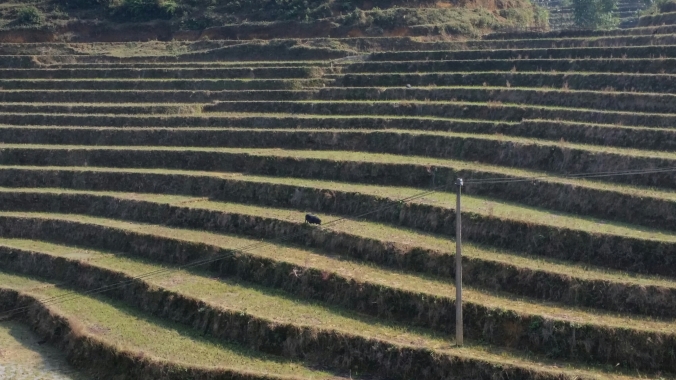
The scenery was also quite a treat, with Goliath mountains overlooking the villages in the valley, flowing clouds that peeked over the mountains but never really threatening to shield us from the warm sunlight. The rice terraces were a prominent feature of the landscape, covering the mountainside like large blankets with elegant postcard designs. They were as beautiful as they were large scale, covering so much land, you could only wonder at how much effort and how long it took for the previous generations to create. Both the natural scenery and the man made ones came together to give us views that were well worth the hike, views that we wouldn’t otherwise know existed if we had stayed in the city area all day.
Eventually we said goodbye to our guides at a cross junction and boarded an arranged bus back to our inn. We even bought from them some self-made scarfs, bracelets, small pouches and a miniature owl figure that was outrageously cute. It was heartening to see them walk away and up to the mountains where they lived their everyday lives, silently contented and continuing the customs and traditions of their elders. We arrived back shortly and now had one last problem; how should we start cleaning our muddy shoes?
* * *
The next day started out as early as the last. We woke up at 7 for breakfast and were off at 8 in our minibus to our next destination. We linked up with Pang (our Hmong guide from yesterday) and dozed through three hours of treacherous mountainside driving. We even witnessed the wreckage of an entire pickup truck after it left the road and plunged into the rapids 30 meters below. It was a chilling sight that kept is alert for a short while before sleep took over again.
We arrived at a Sunday market to 3°c temperatures, and a whole throng of locals weaving in and out of shops to get their groceries. A few tourists with digital cameras hanging around their necks (us included) were milling about. The market was quite a sight though, for I’ve never seen a market as prosperous as this in such unforgiving weather. Anything that could be sold was sold here. Puppies shivered at the ends of raffia-string leashes, live pigs were stuffed into large sacks, large bulls were put on sale for the price of US$2000. There was sweet popcorn, fried dough fritters, sugar cane, more hand-woven art pieces and everyday accessories. You could see a clear distinction between what was meant for the locals and what was meant for the tourists, but it all added to the vibrant atmosphere. We had a warm, filling lunch at a restaurant nearby and left for the next destination.
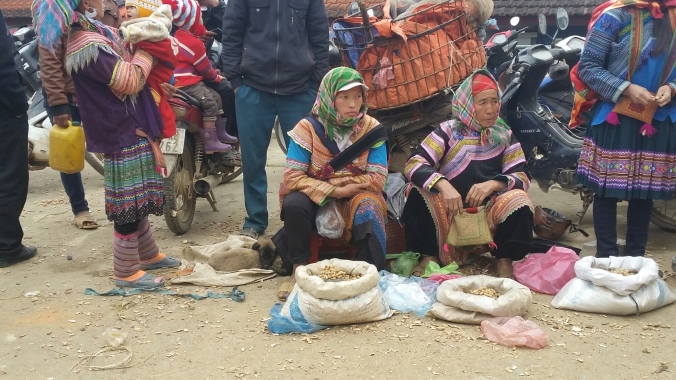
We visited a village (whose name escapes me though the guide did mention it) after that and had a look inside some of the houses to have a better idea of the Hmong way of life. As I had mentioned yesterday, it was a simple life. There was a systematic way of life as far as I could tell, where some houses were used to keep fertiliser, some for chickens to lay eggs (an animal garage as a guide told us) and some were for cooking. I found it strange that all the tourists were frantically taking pictures and approaching everything with wide eyed wonder as the villagers just carried on with their daily lives. Then again, if these villagers saw how we lived back home in Singapore we’d probably observe the same sense of intrigue and wonderment from them. Our lives were just that different and it was nice to appreciate these differences.
The rest of the day was spent taking a quick boat ride across an almost dried up river, and visiting the Vietnam-China border just 3km North of our train station. The river we rode on used to be 2 meters deeper but a hydroelectric power station built upstream dramatically lowered water levels so it posed a problem to the poor boat man. He had to manually push the boat through some areas with shallow water and it was disheartening to see that their jobs have been so adversely affected. We got off dry, though unfortunately the boat man was soaking wet from waist down.
That evening, we took our leave from Sa Pa the same way we came, through the train station. It has been an eye opening experience to explore the rural Highlands of Vietnam, seeing how a race so different from ours lived their lives. What has been even more interesting is the contentment of the people. Children smiled at you and offered to take pictures while the villagers were eager to lend a helping hand whenever we had any problems. There was a lot we could learn from just one short visit, though such lessons are so easily forgotten in the stir of our hectic lives back home. Writing this on the train, I can already feel the fading of wonderment. I realise pictures can only go so far to recreate a certain experience.
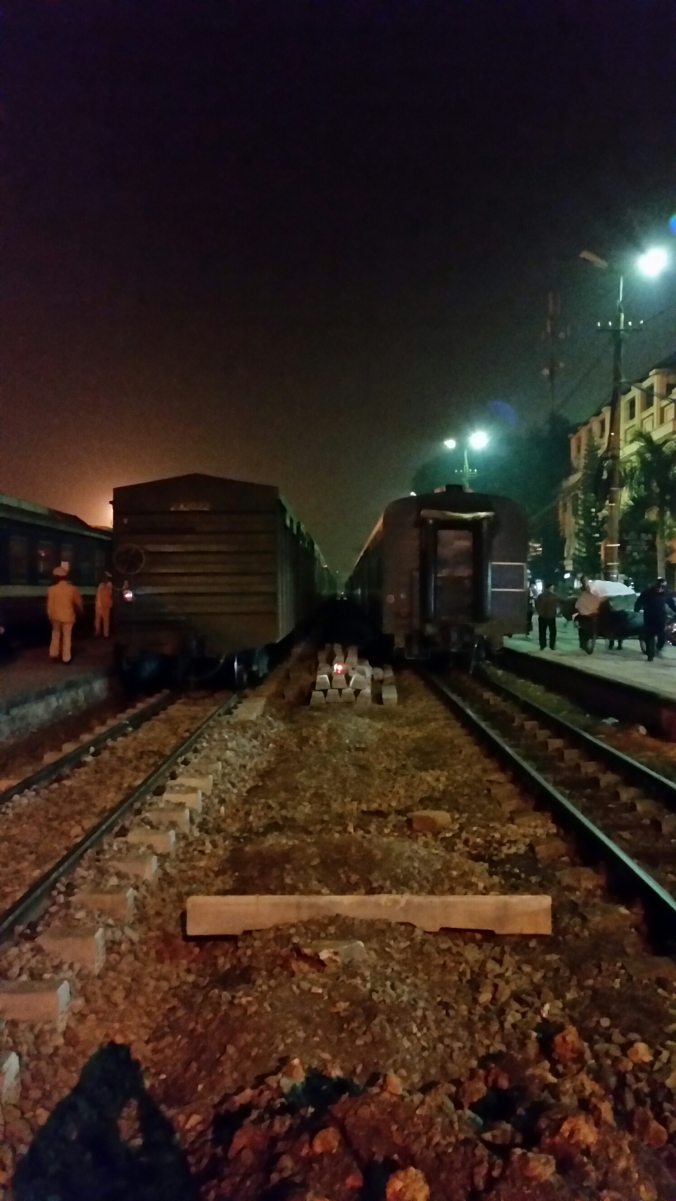
We’ll be back in Hanoi by now, flying off later to Da Lat down south for the next leg of our journey. There will be more to discover!
